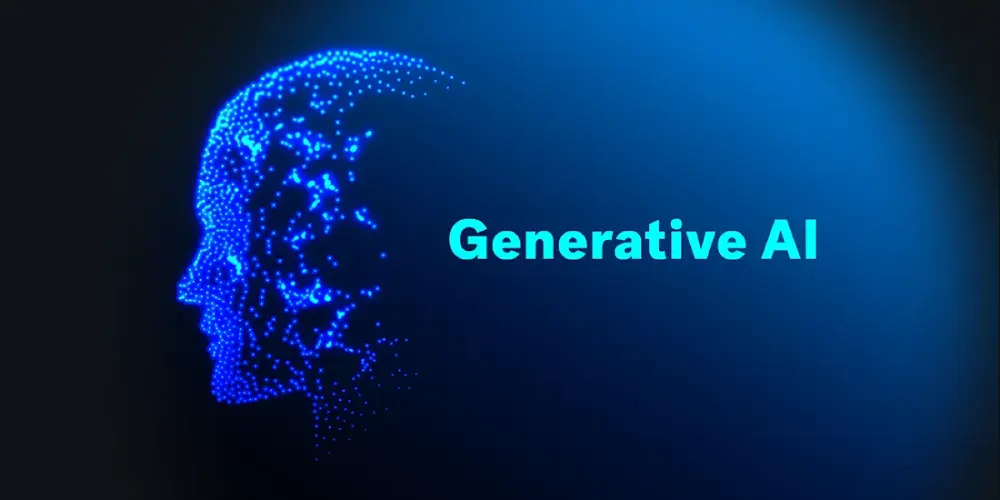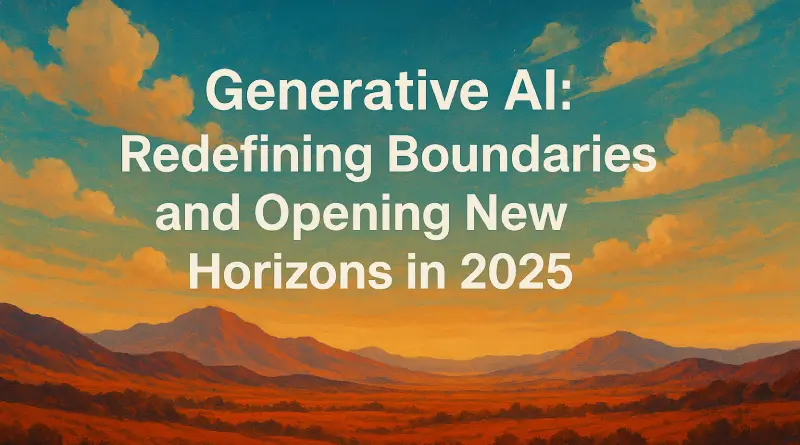Generative AI: Redefining Boundaries and Opening New Horizons in 2025
Generative AI is a revolutionary change in the world where ideas can be created and then computed as a reality in a world of creativity computation. Whether it is the production of personalised marketing campaigns, virtual worlds or the simulation of virtual worlds, this technology is not only automating processes but is exponentially increasing human abilities. MarketsandMarkets estimates the global generative AI market currently stands at approximately USD 71.36 billion with an enormous growth rate that is slated to reach USD 890.59 billion by 2032 at a CAGR of 36.5%. This explosive growth that has been driven by the development of models such as GPT and DALL-E is transforming the world of industries. Generative AI has the potential to drive productivity gains of 5.44 per cent by 2030 in India alone, according to EY research, involving 38 million jobs through automation and augmentation. This blog explores the stylistic changes that generative AI is bringing about and provides interesting input into its uses, on-the-ground impacts, and where it is headed, using reliable sources such as Stanford HAI and McKinsey.
Understanding Generative AI: The Core Mechanics
In a nutshell, GAI is the production of novel work, text, jobs, code, visuals, or video after studying patterns in large volumes of data. The generative models, such as generative adversarial networks (GANs), variational autoencoders (VAEs), and transformers, work in contrast to traditional AI because they generate something new rather than analyse it or predict. As an example, GANs challenge a generator and a discriminator so that creations could be refined, whereas transformers such as GPT-4 act on context in order to produce human-like outputs.
An unusual revelation This is not rotation; this is probabilistic innovation. According to Kelly Schaefer, who works in Google Labs, as she comments in a ROAI institute conversation, AI is a kind of productivity partner, removing drudgery and infusing insight when humans reach a dead end. Practically, applications such as ChatGPT write emails or debug code, leaving the customer free to think the task through. According to the 2025 AI Index Report published by Stanford HAI, 2021 was a year when generative AI received an investment worth 33.9 billion dollars, indicating that the invention is democratising complex work tasks, because, nowadays, the average person has access to creating code or design work that only experts could perform in the past.
Transforming Daily Life and Industries
The sphere of influence of generative AI is much broader than the technology laboratory as it enters the routine of daily life and enterprises. In content marketing it is transforming marketing and the media: AI tools such as Jasper or Synthesia produce custom ad copy, videos, and artificial avatars, which allow small companies to compete on the international scale. The Boston Institute of Analytics notes that in art and design, AI-powered platforms are used to generate photorealistic and procedural games, such as Unity integrations.
Distinctive possession: This is the democratisation which is especially powerful in the new and upcoming markets. Some areas where generative AI helps entrepreneurs are in India, where the digital economy is currently proliferating. As an example, a McKinsey report offers an insight that AI-enhanced applications enable any user to create websites or perform data analysis, which was the domain of experts. Locally, as the AI market in India is anticipated to rise by 30 per cent each year (NASSCOM data), industries, such as healthcare, enjoy the benefits of AI-assisted drug development and possible savings of billions of dollars in research expenses.
In education, AI tutors have recently been used to provide personalised learning on LinkedIn, as explained by Prasad Thete; it precisely means immediate answers and dynamic courses. Productivity also goes through the roof: EY research finds that generative AI may also save repetitive employment whilst generating new jobs and opportunities in areas like AI management, negating concerns around job loss. The McKinsey 2025 workplace report also shows that 1 out of 100 firms invest in AI in the global market, but less than 1% believe they are developed, which explains the upskilling requirements.

Unique Insights: Local Context and Emerging Applications
The less-covered side: The use of generative AI in cultural preservation and innovation. Multilingual content is also produced on urban-rural divides in India, where many languages and traditions are cultivated; AI models trained on regional data can create such content. According to the report on the AI economy of India issued by Access Partnership, the growth of the economy due to the implementation of generative tools is estimated at half a trillion to GDP levels by 2030; however, the ethical training needs to be emphasised to prevent prejudice in the datasets that will represent inequality in society.
The second Gartner takeaway: By 2026, 30 per cent of product development will be automated using generative design AI, an increase of 5 per cent from 2021. When used in the game or VR, AI also creates immersive worlds, improving experiences in such areas as aviation training. But not everything is in its place – the team at Stanford HAI issued a warning about the misinformation that will be going on through deepfakes, encouraging people to be responsible about it.
The Road Ahead: Opportunities and Ethical Imperatives
Generative AI will also unlock infinite innovation in the future, right down to AI-designed symphonies and hyper-personalised healthcare. But other ethical challenges, such as copyright infringement and job transition, must be addressed. In India, where 85 million jobs will be lost to automation worldwide by 2025 (World Economic Forum), reskilling is important, especially on platforms with a specialisation, like the Coursera Deep Learning Specialisation, where students learn neural networks and TensorFlow skills in a course taught by Andrew Ng.
To sum up, generative AI is not becoming a human substitute but is adding to our palette. It has the potential to transform all economies by 2030, but only when it is ethically deployed and through constant learning. In the Indian technology hotbed or any creative market the world over, adoption of this technology will open up your capabilities tomorrow. Get a practical start to keep yourself ahead – your AI-empowered ideas have the potential to revolutionise the future.
Disclaimer
The information presented in this blog is derived from publicly available sources for general use, including any cited references. While we strive to mention credible sources whenever possible, Web Techneeq -Digital Marketing Agency in Mumbai does not guarantee the accuracy of the information provided in any way. This article is intended solely for general informational purposes. It should be understood that it does not constitute legal advice and does not aim to serve as such. If any individual(s) make decisions based on the information in this article without verifying the facts, we explicitly reject any liability that may arise as a result. We recommend that readers seek separate guidance regarding any specific information provided here.

